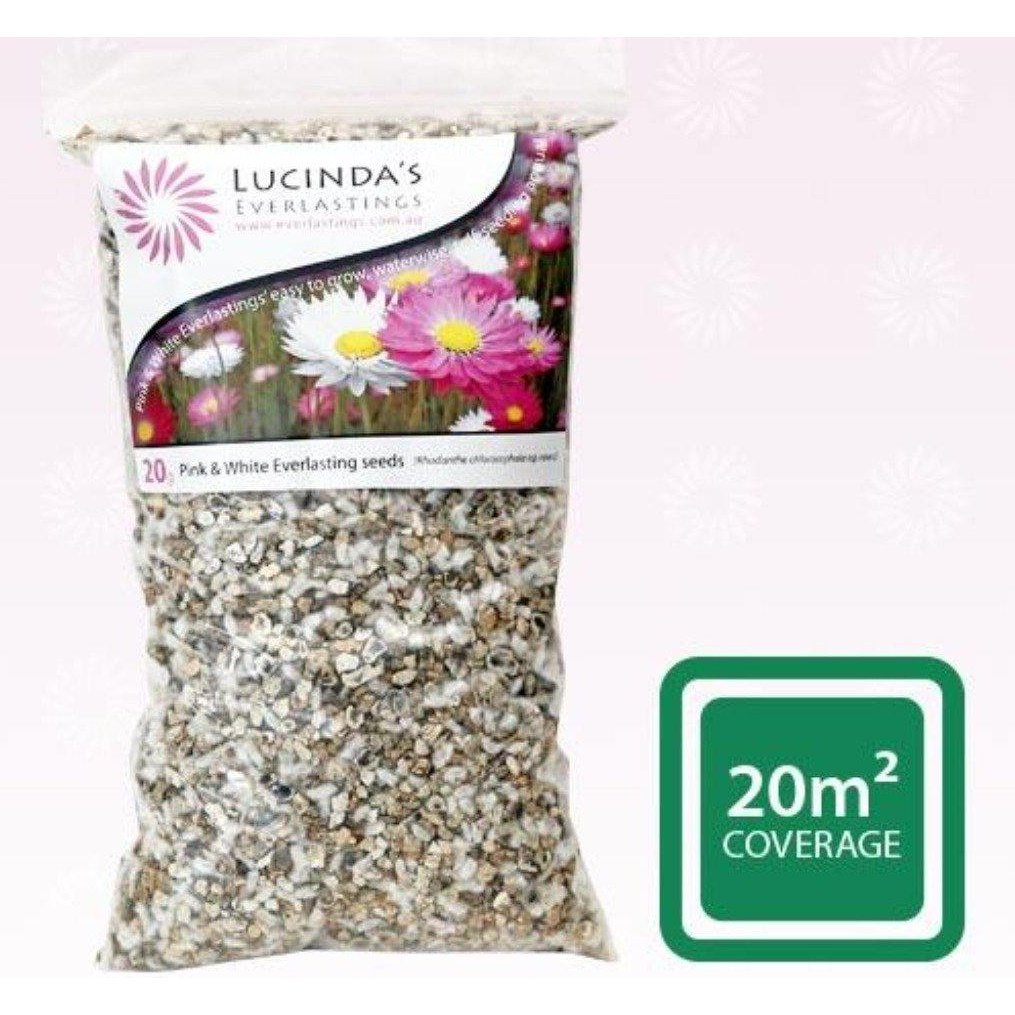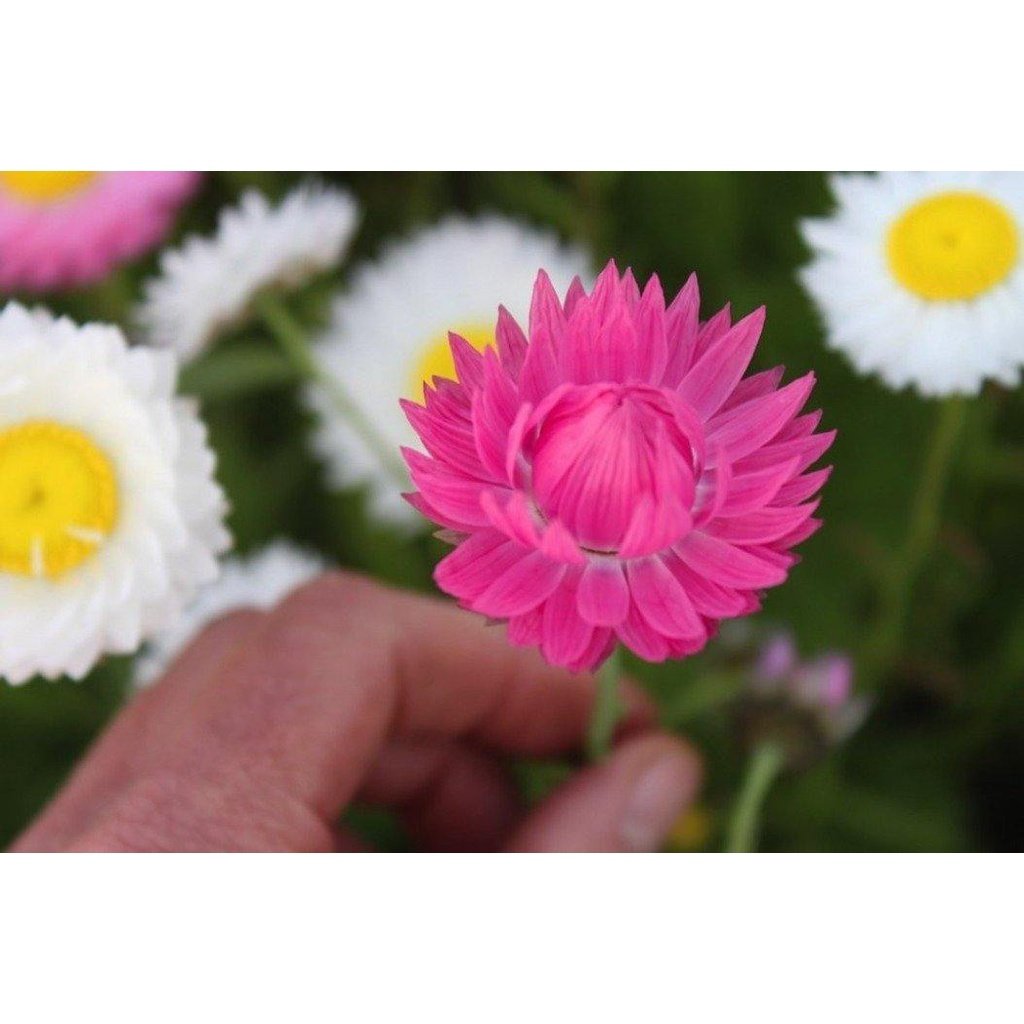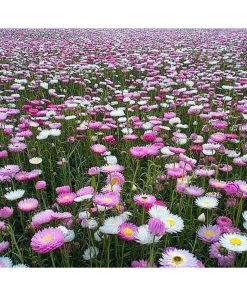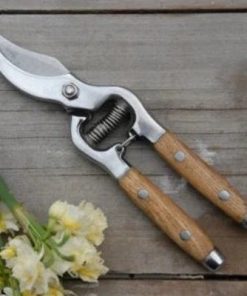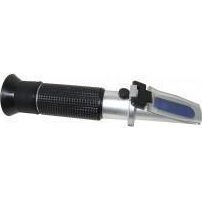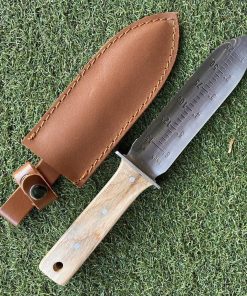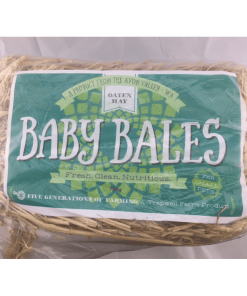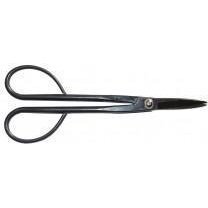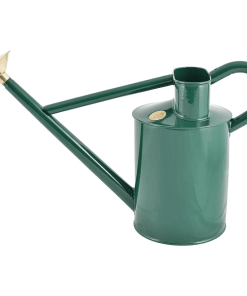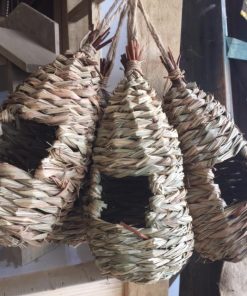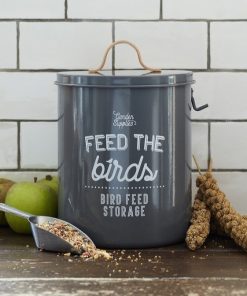Lucinda’s Everlastings – Wildflower Seeds Lucinda’s Everlastings
$ 13,95 $ 8,37
Lucinda’s Everlastings – Wildflower Seeds:
Everlastings are an iconic, easy to grow Australian wildflower. Lucinda’s Everlastings wildflower seed is presented in clear packaging to show off the unusual fluffy white seeds. Available in 10g and 20g packs in the pink and white colour, and 3g in the Golden colour, Lucinda’s Everlastings are ideal for the home gardener and also make a lovely gift.
Everlastings will tolerate extremely cold weather, frost, moderate waterlogging, heat and coastal, tropical, and low-light conditions. They can be planted all year round if irrigated in summer.
Coverage:
- 10g, covers 10 square metres
- 20g, covers 20 square metres
- 3g, covers 6-10 square metres
How to Grow Everlastings:
- Everlastings will grow in most conditions. For optimal growth, ensure your seeds have reasonably well drained soil (not water-logged) and access to sunlight for some part of the day.
- For optimal germination control weeds before sowing.
- Seed should be sown at a rate of 1 gram per 1 m2.
- Apply seeds to the soil surface or lightly cover with soil, for a seed depth no greater than 5mm. Gently press into the soil for good seed-soil contact.
- Control pests after planting.
- Everlastings thrive with the use of a good all-purpose fertiliser such as No Frills – Hydrofish. If your soil is deficient in any nutrient, also consider the application of trace elements such as No Frills – Rockdust Plus.

2004 marked the creation of Lucinda’s Everlastings, by Rob and Jen Warburton and their two daughters Lucinda and Zara. It was an idea which led to diversification and offered an exciting new industry, complimenting the existing cropping and sheep enterprises on their farm in Kojonup, Western Australia. Lucinda’s Everlastings was inspired by the sheer beauty and simplicity of the everlasting flower. It is a flower that is iconic to Australia, attracting thousands of tourists to our country each year.
Landcare is a very important element of the farming system adopted by the Warburtons, and they have returned much of the previous grazing land to native vegetation and have fenced off and revegetated all of the waterways on their property. In the middle of the property rests 100 hectares of untouched native bush, full of rare wildflowers and native animals. In 2011 they incorporated the use of everlastings into a wheat crop rotation by lining the outside of the paddocks with the flowers. They are hopeful that this method of incorporating biological diversity within a paddock will encourage a biological method of eliminating harmful insects, diseases and mildews within the crops, eliminating reliance on chemical control.
| Color | Pink & White |
|---|---|
| Size | 10g, 20g |
Quick Shipping and Professional Packaging
Due to our longstanding partnership with UPS FedEx DHL as well as other top international carriers, we are able to provide a range of shipping options. Our warehouse staff are highly trained and will pack the goods according to our precise and exact specifications. Before they are shipped, your goods will be thoroughly examined and secured. We deliver to hundreds of thousands of customers every day in different countries. This demonstrates our dedication to become the biggest online retailer in the world. Both Europe and the USA have distribution and warehouse centers.
Note: Orders that contain more than one item are assigned a processing time depending on the item.
Prior to shipping, we examine the items ordered thoroughly before sending the items. The majority of orders will be shipped within 48 hours. The delivery time should be between 3 and 7 working days.
Returns
We are not able to manage the stock at our warehouse or factory. The stock levels may fluctuate at any given time. It's possible that the stocks could be depleted after the order has been made.
Our policy is valid for 30 days. Unfortunately, if the 30 days have elapsed after you bought your item, we will not be able to provide a refund or exchange.
In order for your item to be returned it must be in its original packaging, unopened and in the same state as you received it in. The item must be returned in its original packaging.
Related products
Garden
Garden
Garden

